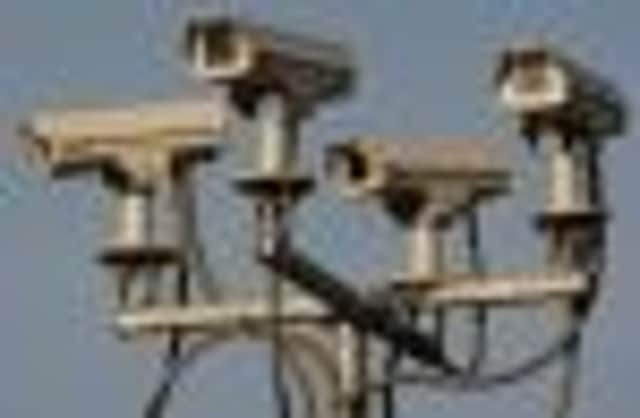Rise of CCTV in ‘Big Brother’ Scotland


The figures have prompted calls for government regulation of the spiralling use of surveillance cameras.
In the past year alone, councils and police forces spent more than £8 million to maintain the costly systems, which are seen as a key tool in the fight against crime. There are now at least 4,114 public-space CCTV cameras and mobile camera vans across Scotland, with hundreds of staff employed to monitor them, according to figures obtained through Freedom of Information legislation.
Advertisement
Hide AdAdvertisement
Hide AdThere are now fears that their use could “spiral out of control” with the total number of cameras up by 1,000 compared with previous years.
Campaign groups are calling for a “proper debate” about the place of CCTV and its spread, insisting that there is no evidence the surveillance measure helps to cut crime.
However, the Crown Office and councils say the cameras have provided evidence in thousands of court cases across Scotland.
The biggest rise in CCTV use in recent years has been in Aberdeen, where 680 cameras were in use in 2012, compared with 482 the previous year.
North Lanarkshire, whose network of cameras is operated by arms-length body Town Centre Activities, has 605 CCTV cameras.
The £8.2m costs across Scotland cover both staff and operating expenses, although this has come down by about £500,000, according to the latest figures.
The Liberal Democrat leader, Willie Rennie, said: “The Scottish Government should follow the coalition government and innovate steps to regulate CCTV cameras to prevent inappropriate surveillance in our community.
“The use of CCTV in Scotland shouldn’t be allowed to spiral out of control without rhyme or reason,” Mr Rennie added. “The Scottish Government needs to provide assurances that someone is watching the watchmen and improve regulation for the use of CCTV.”
Advertisement
Hide AdAdvertisement
Hide AdMairi Clare Rodgers, of Liberty, said CCTV could be useful in “certain situations”.
But she added: “Research suggests cameras don’t stop crimes and only prove helpful in a handful of cases.
“Lots of public money is spent on surveillance which might otherwise be put towards more police on the beat and proper street lighting,” she added.
“Either way, an informed debate about CCTV’s cost to purse and privacy alike is long overdue.”
Green party co-leader Patrick Harvie added: “The drift towards ever more widespread surveillance continues, despite little evidence that more cameras make people safer.
“Hammering up another camera might feel like real action, but safety on our streets can’t be fixed like this.”
The 4,114 cameras across Scotland compare with a total of 3,115 uncovered in an FOI request 16 months ago.
The size of the network has soared since 2003, when there were just 1,269 such cameras.
Advertisement
Hide AdAdvertisement
Hide AdThere are 292 staff employed across Scotland to monitor cameras, and this number, by contrast, has remained stable in recent years.
East Ayrshire had operating costs of £959,929, while Edinburgh shelled out £921,000, the figures show.
Nick Pickles, director of the civil liberties campaign group Big Brother Watch, insisted that CCTV was “lousy” at deterring crime.
He said: “The public would be far safer if the money was spent on street lighting, proper policing and actually punishing criminals when they are caught, rather than giving them a slap on the wrist and putting them back on the streets.
“In too many towns we now have a CCTV on every street corner, yet never see a police officer there.
“The public are treated as suspects to be monitored by faceless council officials, yet we are no safer walking the streets as a result.”
However, the cameras are seen as an invaluable tool in the fight against crime. In Edinburgh alone, figures show CCTV resulted in 1,806 camera-assisted arrests.
In addition, there were also 5,021 viewing requests to obtain evidence about crimes in the capital, from which 1,749 evidence packages have been produced for court use.
Advertisement
Hide AdAdvertisement
Hide AdA spokesman for the Crown Office said: “[We] consider the use of CCTV an effective tool in the detection of crime.
“CCTV evidence used in the prosecution of crime has been found to be reliable in assisting in the successful outcome of trials where it has been produced as evidence.”
A Scottish Government spokeswoman pointed out that recorded crime was now at its lowest level in 37 years, with the addition of 1,000 extra police officers since the SNP came to power in 2007 playing a key role in this.
“Fear of crime is down and more people are feeling safer in their neighbourhoods.”
She added: “CCTV has played an important role in making our streets safer by helping our police and prosecuting authorities catch criminals and tackle antisocial behaviour.”